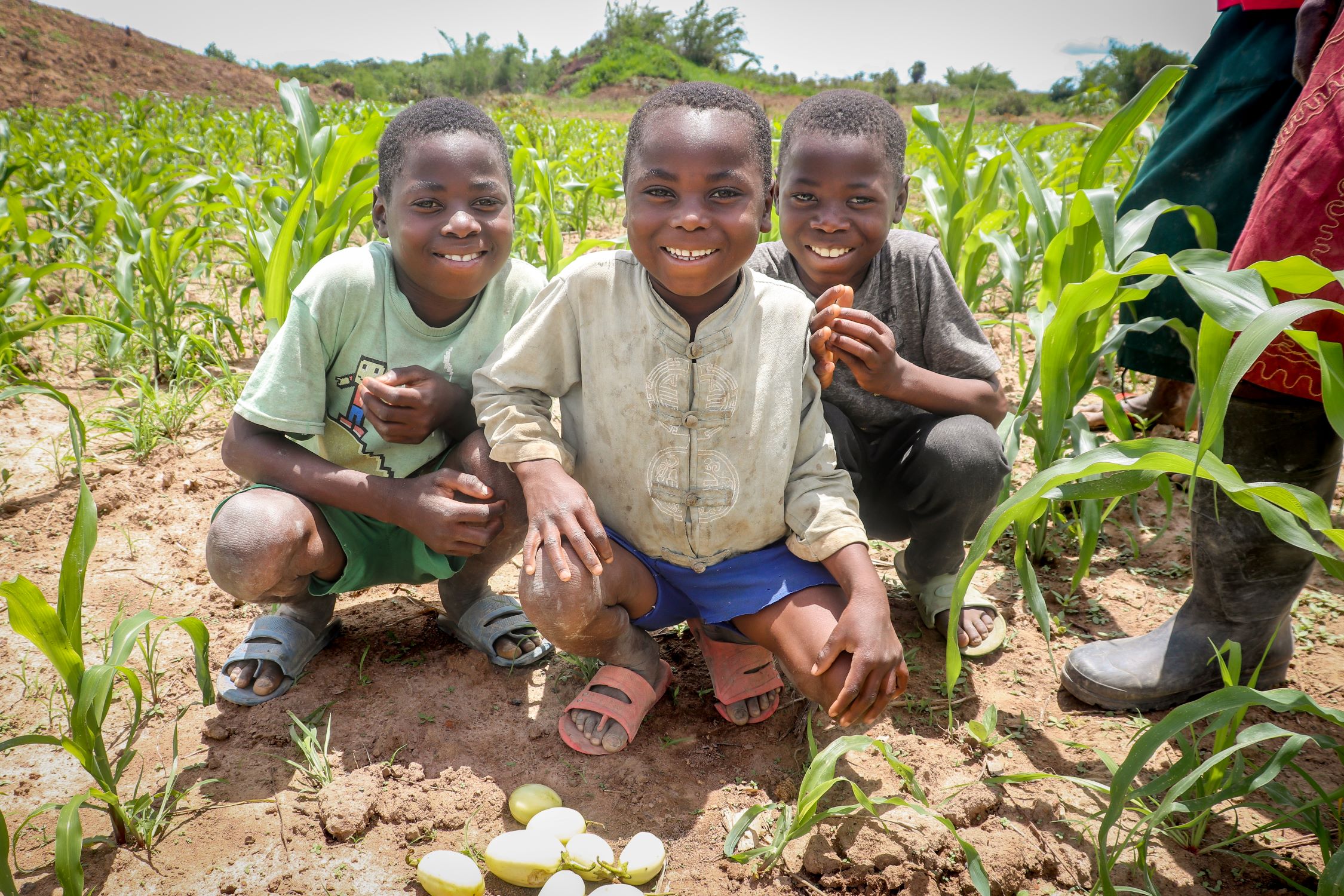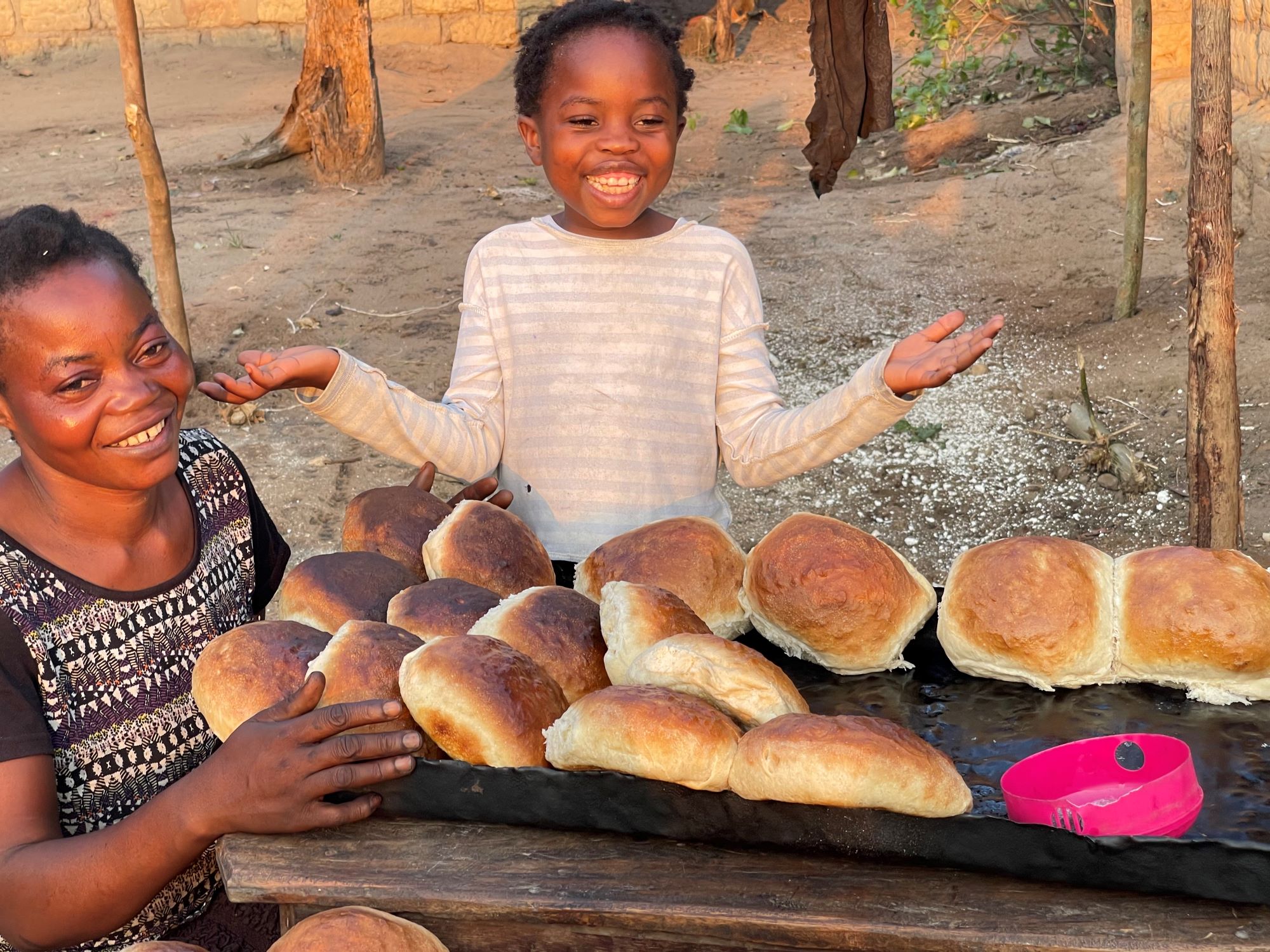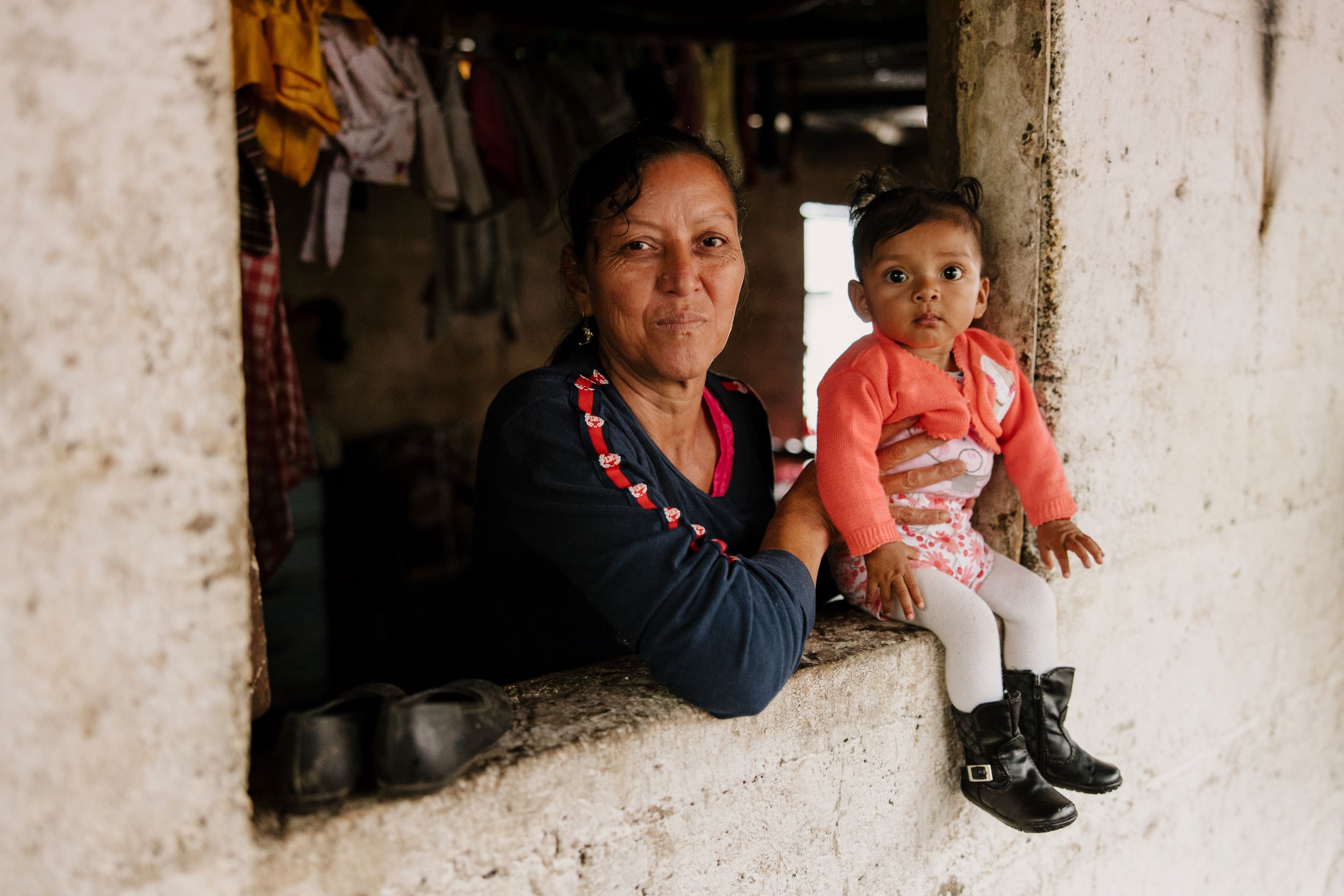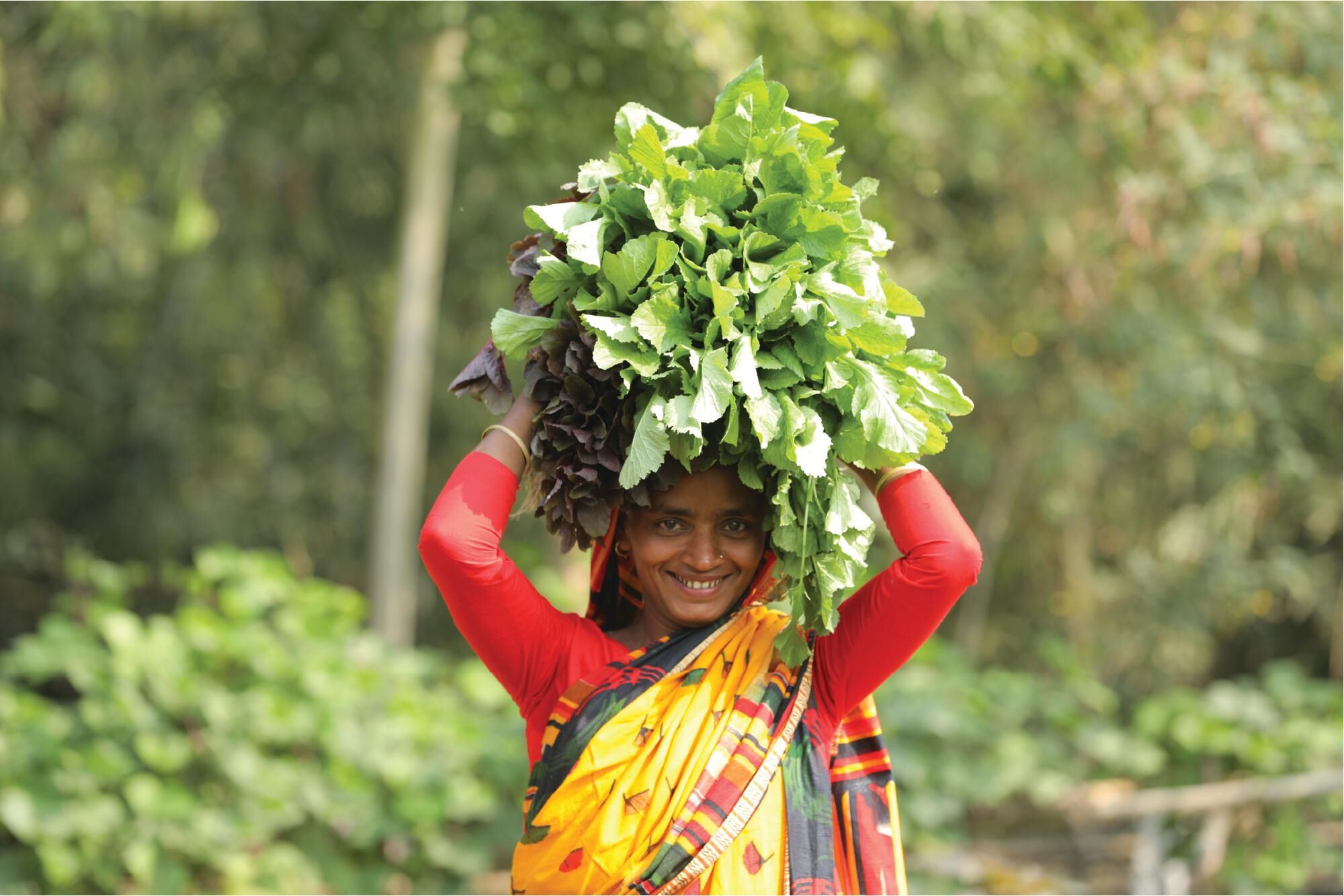
How World Vision combats malnutrition
We reached 14.3 million people, including 8.6 million children, in 30 countries
World Vision is seen as a global leader in child nutrition.
We get invited to share our expertise at international conferences, like a recent conference at the Hague - the Micronutrient Forum 6th Global Conference - where we highlighted our new ENOUGH campaign to end child hunger and malnutrition.
What is a micronutrient and why are they important?
Micronutrients are defined as vitamins and minerals needed by the body in very small amounts to perform a range of functions for normal growth and development. Micronutrients include minerals such as iron, Vitamin C, Vitamin D, Calcium and Zinc to name just a few. These can be found in everyday food such as spinach for iron, carrots for Vitamin A, and milk for calcium or can be taken as supplements when everyday food is inadequate to meet needs.
When the human body is deficient in these minerals, it can cause serious health conditions and impact physical and mental capacity. It is estimated that over 2 billion people have a micronutrient deficiency, with iron deficiency anaemia being a common one. The most vulnerable groups are women, adolescents, and children. Disadvantaged adolescent girls and women and those living in low-income regions bear the brunt of undernutrition and anaemia.
Other forms of malnutrition which are most visible are stunting, wasting and being overweight, which affects at least one in three children under five.
How can micronutrient deficiencies be addressed?
Micronutrient deficiencies can be prevented, and one of the ways is by implementing a diverse diet, to include both animal and plant source foods. Other techniques include mass fortification (when additional micronutrients are added to foods) and bio fortification (a process to increase nutrient density of food crops through conventional or improved farming practices).
It is necessary to ensure essential services are available to vulnerable groups, such as nutritional education, and iron, folic acid and multiple micronutrient supplements to girls, as well as pregnant and breastfeeding women. Children under the age of five at risk of micronutrient deficiencies can also be given other micronutrient supplements such as Vitamin A.
What is World Vision doing to help prevent malnourished children?
The Positive Deviance Hearth approach prevents and rehabilitates undernourished children. We have compiled a booklet of 32 menus from various regions around the globe, developed by World Vision staff and the communities they work in, using locally available, low-cost and nutrient-dense ingredients. These menus have been used in World Vision's Positive Deviance Hearth (PD Hearth) programming to rehabilitate undernourished children.
Data from nine out of 22 countries implementing PD Hearth in 2022 recorded 21,000 at risk and underweight children under-five were enrolled into PD Hearth programmes – with 49% of them fully recovered from malnutrition within three months. World Vision also works with communities to increase production and consumption of nutritious foods.
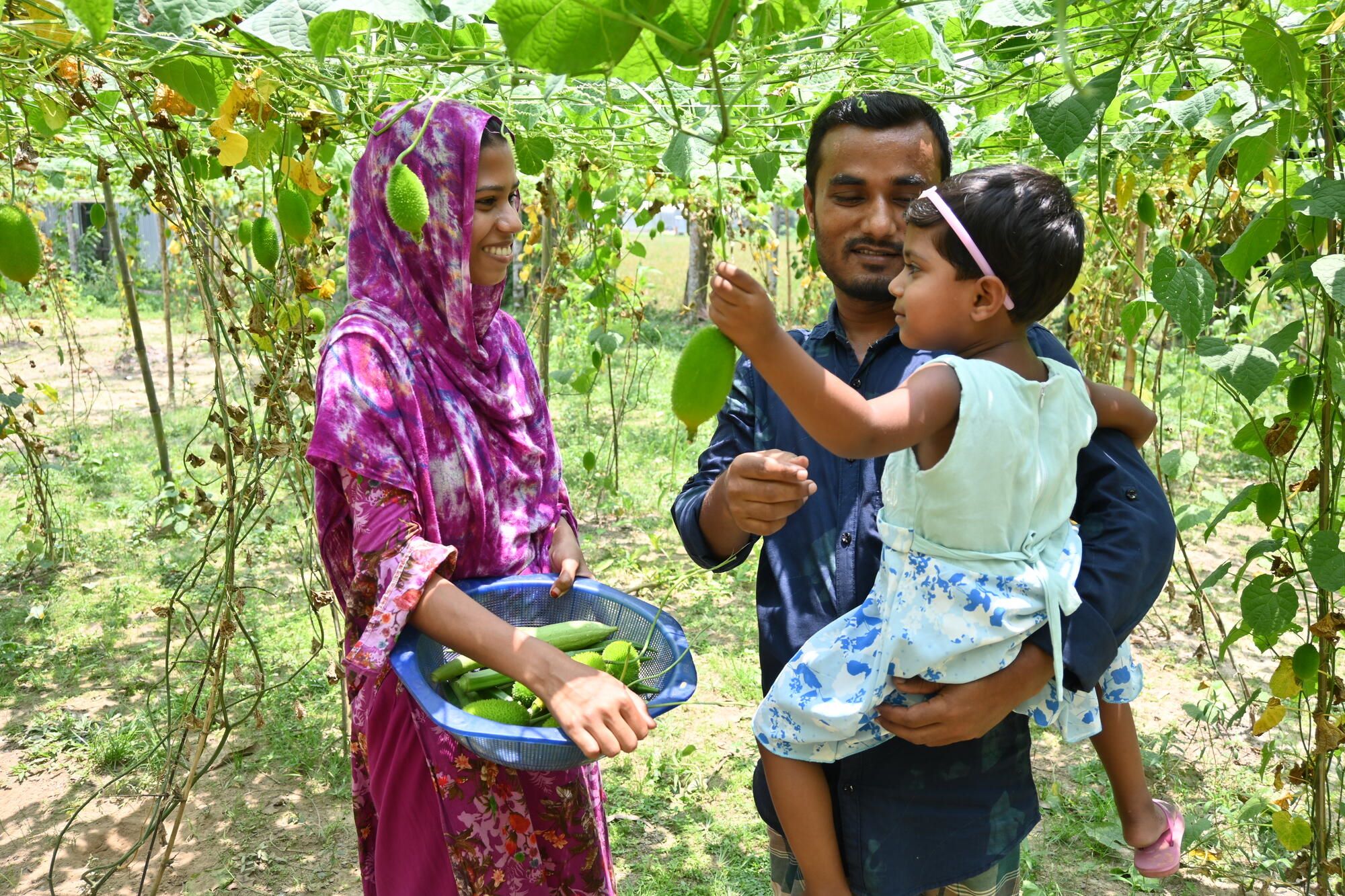
Nutritional education and life skills
The Bangladesh initiative to enhance nutrition security and governance (BleNGS) aimed to improve maternal and child nutrition of over 150,000 nutritionally vulnerable families in the Jamalpur and Sherpur Districts of Bangladesh, and to strengthen health and nutrition service delivery systems there.
Part of the BIeNGS project included Adolescent Girls Clubs, which held group sessions and peer-education for health, nutrition, WASH (Water, Sanitation and Hygiene) and life-skills. The adolescence stage is a critical period of social, emotional, cognitive, and physical development. Through the project, World Vision has helped over 44,000 adolescent girls, who now have better nutritional knowledge, with improved life skills, which can protect them from forced marriage and domestic violence. Girls aged 10-19 were also given micronutrients such as iron-folate supplements to meet their increased physiological needs.
Hira, 16, noticed the improvements in her life since joining the Adolescent Girls Club. “I can feel change within me after joining the club. Now I know detail about health, nutrition, and hygiene practice. I knew very little before. These things are very important for adolescent girls. I can even discuss freely with family members and friends about needs of staying clean, eating nutritious food and changes at this adolescent age,” says Hira.
Working with the World Food Programme
World Vision works in partnership with other organisations such as the World Food Programme (WFP) to make food easily accessible for vulnerable children and to prevent malnutrition. Together with WFP, in 2022, the World Vision global partnership reached 14.3 million people - more than half of these (8.6 million) were children in 30 countries.
In Afghanistan, food packages were given to families caught up in conflict and climate change. In Zimbabwe, World Vision worked with women to grow nutritional gardens which were revived following damage from extreme weather. They can now feed their families and even sell surplus items.
In the Democratic Republic of Congo, World Vision provided a hot school meal to children whose families were struggling to feed them due to conflict which caused displacement. By providing meals at school, World Vision helps to ensure that children are well-fed and ready to learn. In many countries where we work, a child's school meal may be their only meal for the day. A WFP report on school meals showed that overall, around 41% of children enrolled in primary school benefit from school meal programmes globally.
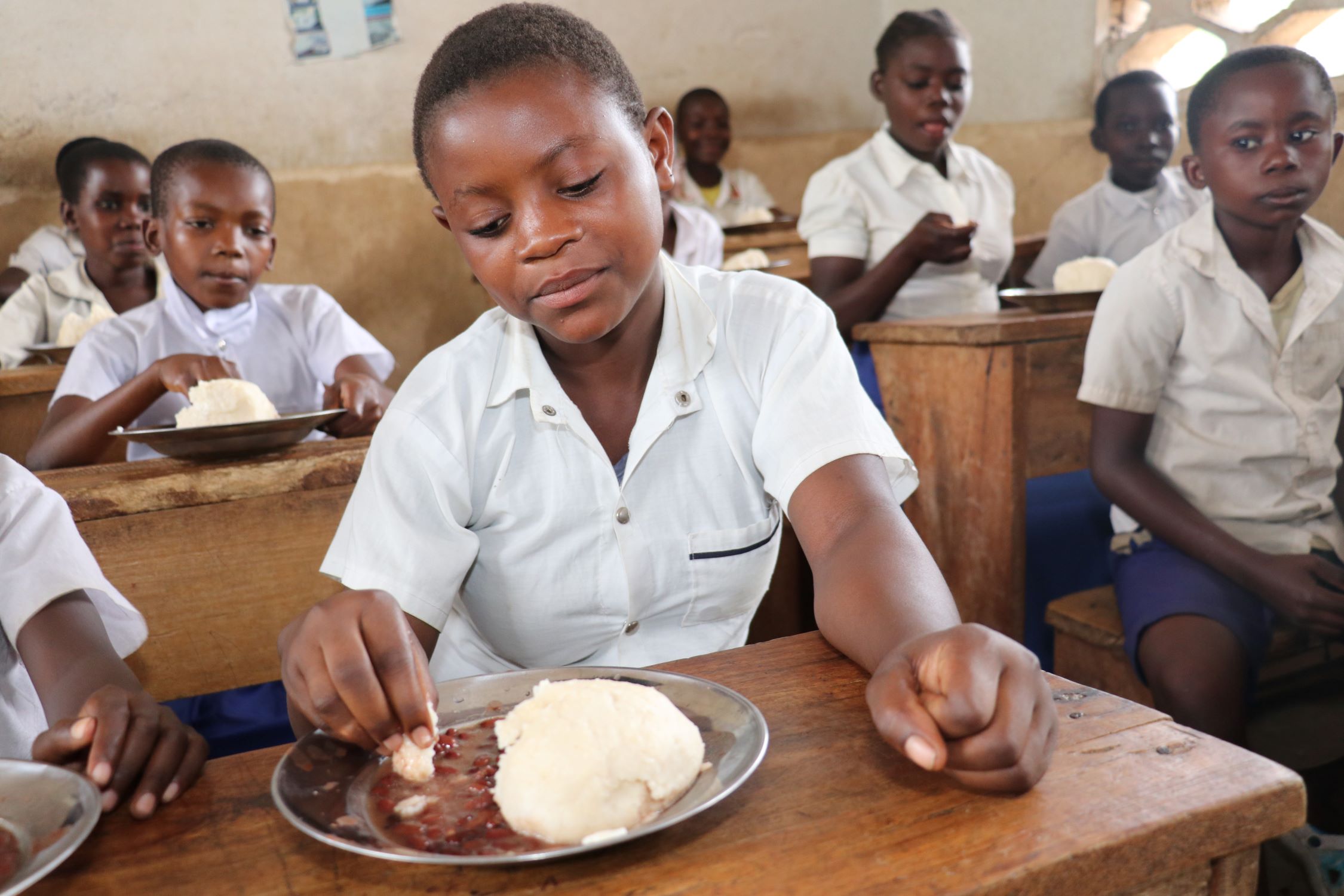
Anita's story
Anita, a 12-year-old girl from South Kivu, Democratic Republic of Congo, benefits from her school feeding programme. She has four siblings and they are looked after by their mother. Before the programme, Anita had dropped out of school as hunger meant she was distracted and unmotivated in learning.
Now back at school, where she also receives a meal, Anita says, "When the director told us that we would be eating at school, I didn't believe. I thought it was propaganda to keep us in school, and now it's a reality...I go back home after school with strength as I am not hungry, and I join my mother to help her in her daily house works."
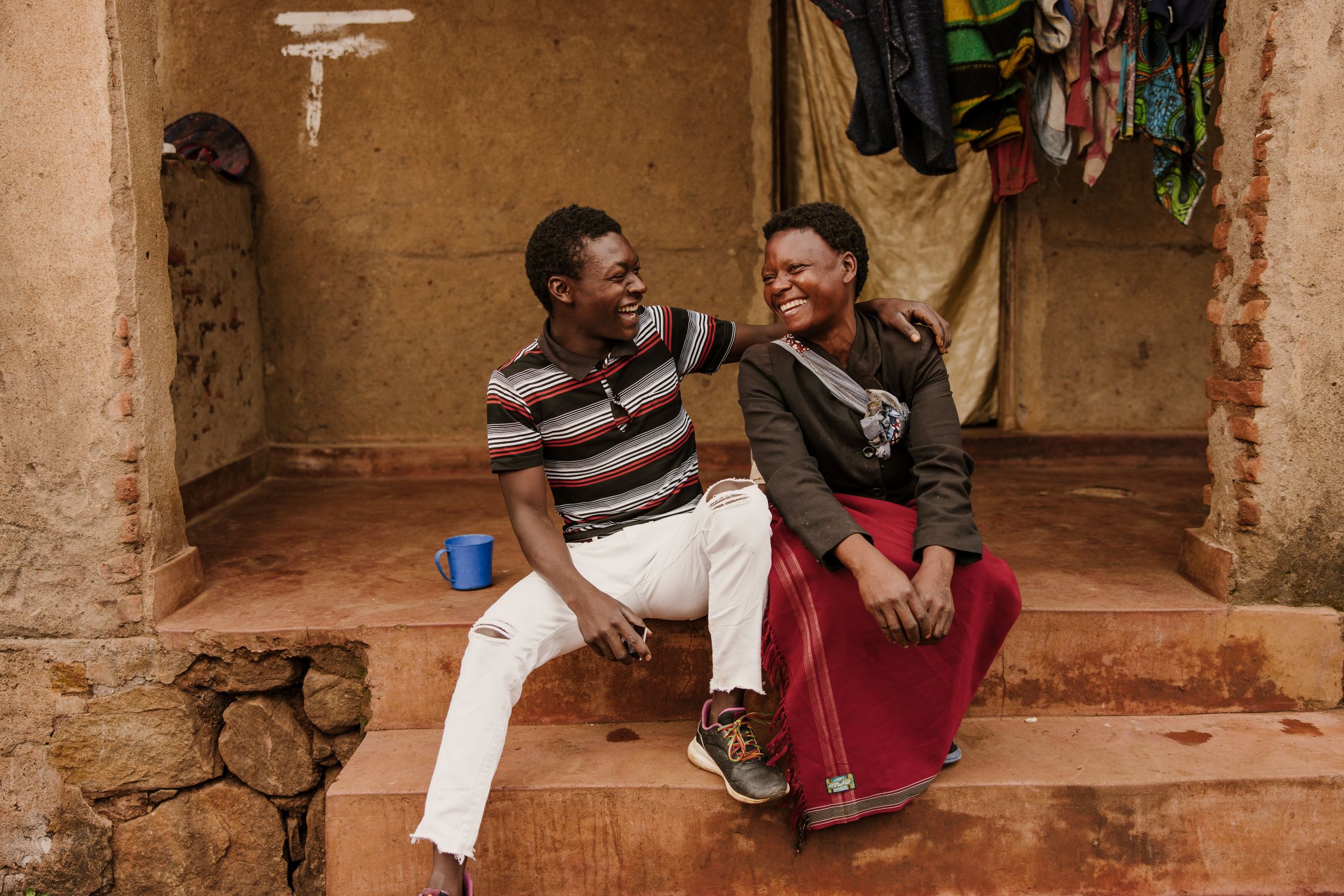
Moses' story
And in Malawi, Moses can testify to the difference World Vision makes. He’s 19 now and the first person in his whole village to go to university. When he was small, the dry season often meant waking up hungry, going to school hungry and going to bed hungry. His village is in a rain shadow, meaning the rain often passed it by. Crops died, and those that grew gave low harvests. Many children in his area were malnourished and often sick.
Moses’ father works as a tailor, so they had income – but not enough for the family of six. His mother Maria remembers, “There were times when we were hungry, and the children didn’t have enough to eat to be healthy.”
Then World Vision partnered with the local communities. Families learnt new farming techniques, and a team of local volunteers – including Maria – were trained in child health and nutrition. The community worked together to fight malnutrition, with those who had a good crop sharing extra vegetables with any family that needed help to feed their children.
Moses says, “My mother was part of training with other people in the village who learned how to improve the way we eat to be more nutritious, using ground nuts and other things, and now we eat very, very nice food!”
Moses is now studying a degree in Mathematical Sciences and his aim is to become a doctor. He added, “I want to save people’s lives. I want to be the one who helps people to be healthy. Then I want to join an organisation like World Vision who helps people to improve their lives.”

